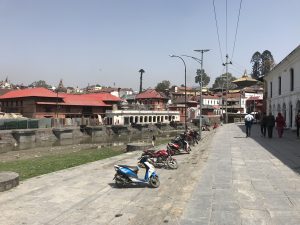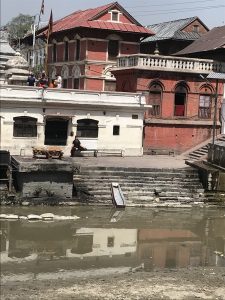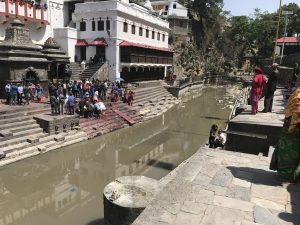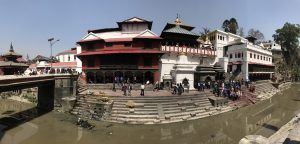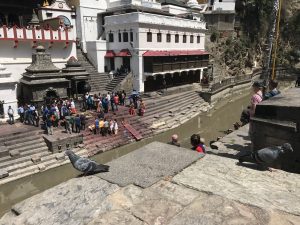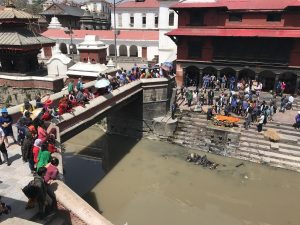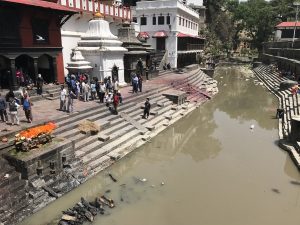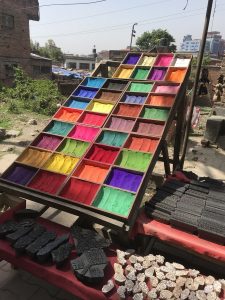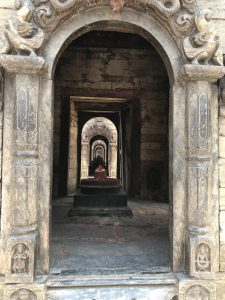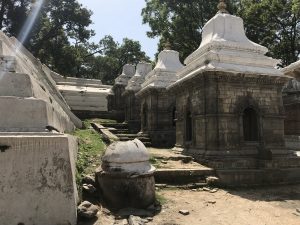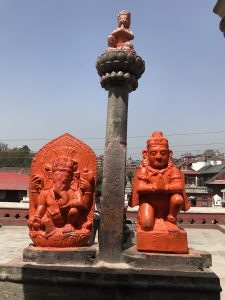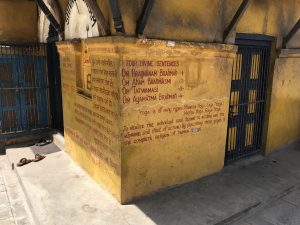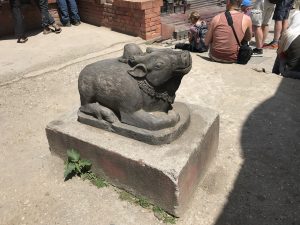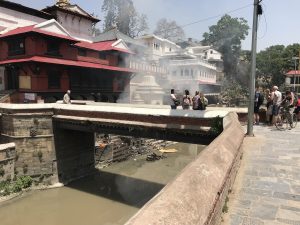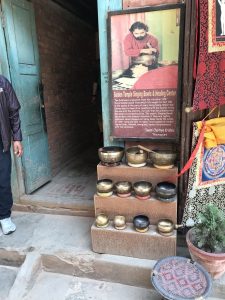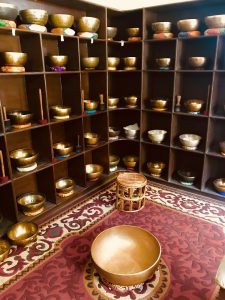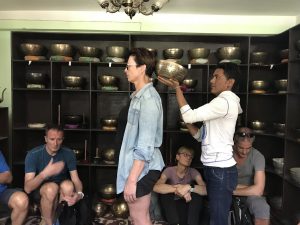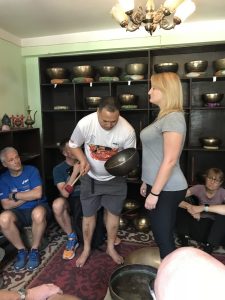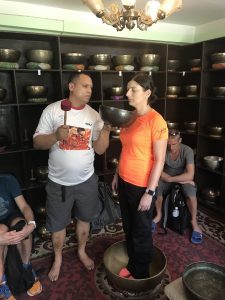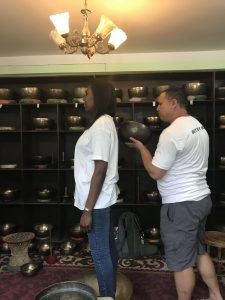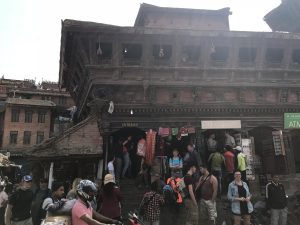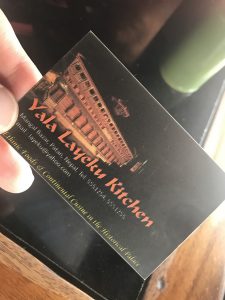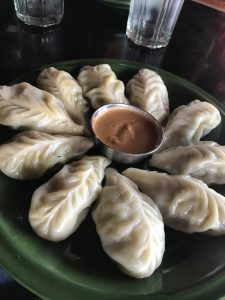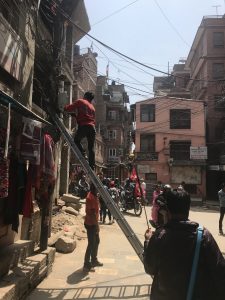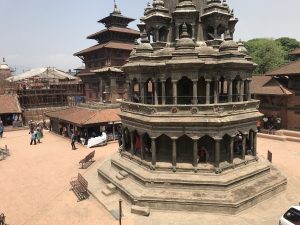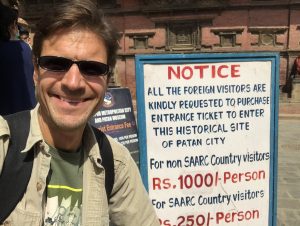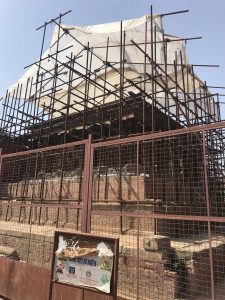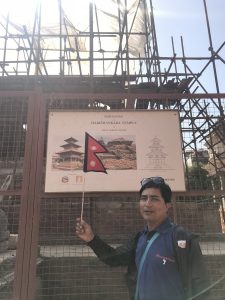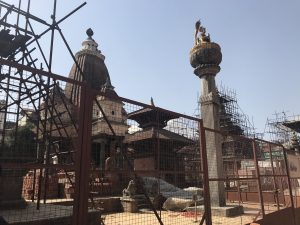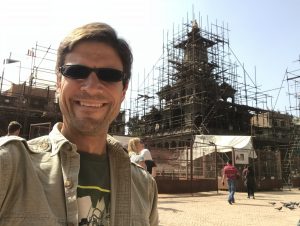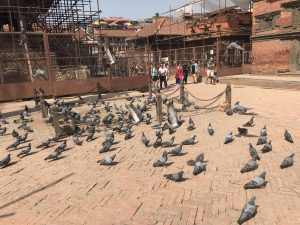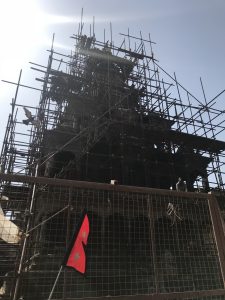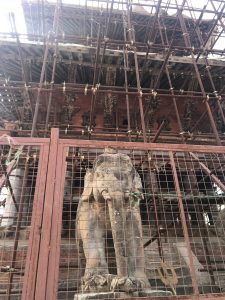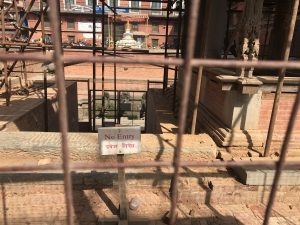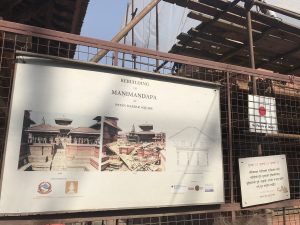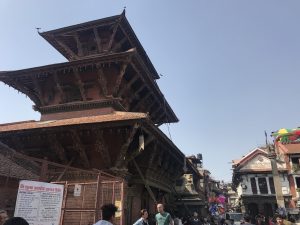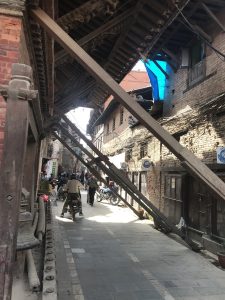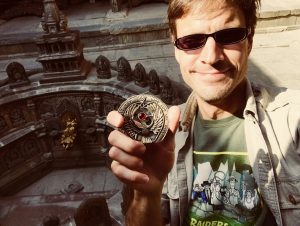From the original itinerary:
April 22: Sightseeing Patan. Patan with its magnificent art and architecture is known for its industry in bronze, silver and copper. After lunch you will visit the impressive cremation Pashupatinath. Here the cremation in the open air. The ash that remains after the cremation is spread in the holy Bagmati river.
In a decision I fully supported, not that my support made nor makes any difference, we flipped the day’s itinerary and started with cremations. It just seemed improper to have lunch and then toddle off to a funereal rite by the river. Though to be honest, it felt improper to be there at any time.
I don’t know if it’s a personal or cultural bias on my part or something more but I felt really uncomfortable standing along the banks of the river in the centuries old stands watching a family go through the cremation rituals. It’s a ritual, my guide Ari corrected me when I asked about the funeral ceremony. (Note: I confirmed the spelling – it’s just like Vincent Chase’s agent!). A ceremony he told me is something happy and joyful – this is a somber rite.
Which is all why I found it doubly weird then that tourists and locals were gawking and pointing, snapping photos, amidst this rite … and a few folks were actually on a picnic. Part of that is the temple and surrounding grounds being decidedly multipurpose. Some people were washing their clothes up and downstream from where the eventual ashes would be scattered into the water. Some prospectors were downstream panning for the gold fillings of the dead. Monkeys and cows bathed and drank the water.
The park itself has other prayer monuments and aspects. Shiva Linga, the creator form, had many monuments, guarded by a small bull statue. Ari tells me this little guy is Nundi, Shiva Lingua’s transportation in the cosmos.
I never handle death and mortality well. And I personally have never had to handle the logistics and details of a funeral. My brother bore all that responsibility while I watched far removed on the sidelines. And thus I kinda recoiled from the stats and figures that were tossed around:
The traditional cremation takes three hours for the fire to consume body. It costs 11,000 rupees all in. It also uses lots of wood and the government is on a conservation kick. After the 2015 earthquake left 1900 dead in Kathmandu alone, they made efforts to move toward large scale industrial incinerators. The government even offers subsidies as an incentive – it only costs the family 3000 rupees and the process takes takes 45 minutes.
I already was uncomfortable and then this just pushed me over the edge. I tried therefore to take more photos of the people watching the ritual as opposed to the ritual itself. And there’s no way to convey the impatience of the crowd for the mourners to light the prepared body (and I sheepishly and ashamedly admit I am guilty of this as well). I refused to take a photo of that, although I did snap a shot of the smoke rising into the air.
One of the interesting details of funeral rites in Nepal is that when father dies, elder son sets the body afire. When the mother dies, it’s the youngest son who starts the fire.
I wouldn’t say I was thrilled to see this ritual and to ponder and reflect on mortality. I guess I’m glad I saw it and it made me want to try and live for the day… but the truth is it left me reeling and contemplative, melancholy perhaps the best adjective. And voyeuristically intrusive on another human’s grief.
I’m failing to explain any of this very well. When it comes to mortality I’m even more chaotic and sloppy in my prose.
***
At the request of a fellow traveler, we detoured to a Singing Bowl and Healing Bowl manufacturer and treatment facility.
Depending on the size of the bowl, the practitioner can adjust the frequencies of the various chakras. A number of my fellow travelers took up the offer to have their chakra harmonized, a process that took a number of strikes on a bowl, the application of the vibration to the body to shake them to their bones, and a bit of chanting. They offered to do this one-by-one but honestly there’s only so much time in the day and we had to limit ourselves. I was tempted I will tell you but figured I wasn’t dying to do it either; why not let folks who really wanted to have their chakras tuned go for it.
***
Lunch took a long, long, LONG time. It was a touristy spot, one that saw several tour groups trudge through for a meal. And the food, while overpriced, was good. It just took an hour plus to get it to the table.
I had mo:mo, a Nepalese dumpling. As I’m something of a dumpling fiend, well, this was pretty tasty. And the dipping sauce was a tomato based spicy delight.
***
The last stop of the day was a walking tour of Patan Durba Square. This has much more recent monuments and structures than other parts of Kathmandu and Nepal. The reason being is that in the 15th Century, the king of Nepal had three sons, each of whom wanted to be king. The old master decided to split his kingdom into thirds so each son could be royalty. The middle child, the one who was granted Kathmandu, cleverly outmaneuvered his youngest brother and took control of Patan. So Patan never had a royal palace or anything king-specific… until the 17th Century when the pampered grandson of that aforementioned middle child declared himself king of Patan (with his grandfather’s blessing). As a result, Patan saw its royal buildings and structures built in the 17th Century, two centuries after the others.
In the 18th Century, Nepal collapsed into hundreds of small kingdoms. One wise ruler sought to unify the lands, realizing that failure to consolidate meant the area was ripe for colonization and subjugation to the British or others. He therefore unified the various kingdoms into one kingdom, the country of Nepal.
Much like Durba Square yesterday, a lot of buildings suffered tremendous earthquake damage. Three years on, there’s still much to be done throughout Nepal, albeit there is clearly progress being made.
Obviouslt there’s a lot more to all of this but that’s the short, short version, hastily scribbled down before I turn in for the night.
Oh, but before I forget — nope, nope. Too late. Shoot. It was good, too.
So instead, here’s a shot of me with the headpiece of the Staff of Ra:

